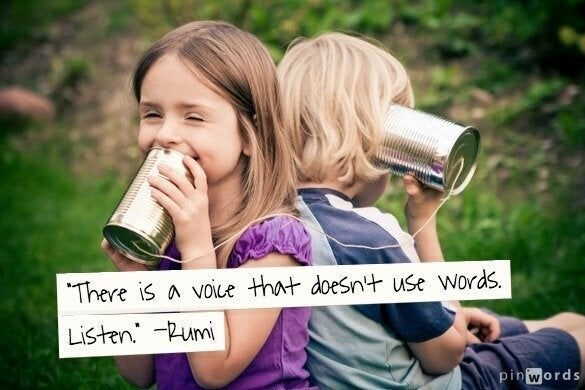
When most of us are asked what makes one a great communicator we usually emphasize speaking or writing ability. When in fact, the art of communicating rest with improving our passive listening.
Active and passive listening are as different as listening and hearing. For instance, listening requires our ability to receive and interpret information, whereas hearing is an involuntary auditory response perceived by the brain.
Both are equally required to achieve better communication between individuals or groups. However, the most direct way to improve communication is by learning how to improve your passive listening.
There are two types of listeners - passive and active
The primary goal of an active listener is to understand what is being conveyed for problem solving such as: When we listen actively we receive instructions, focus on details, solve problems, open ourselves up to others, and share our values, feelings and ideals.
Passive listeners on the other hand hear what is being said without necessarily retaining information. An example of this is when we fade out of a conversation because we either become distracted or disinterested in what the other person is saying.
How active and passive listening work in relationships
In a relationship communication is one of the 6 Cs for a healthy relationship. However, in order to communicate assertively, yet effectively we must be willing to listen respectfully to the other persons point of view. That means allowing the person who is speaking time to speak without interrupting them. In this way we can reflect on what the other person is saying, and respond accordingly (active listening).
Interrupting or fading out of the conversation when the speaker is speaking is an example of passive listening. When we do this we risk becoming argumentative rather than communicative because, we are no longer actively listening to what the speaker has to say.
How to improve your listening skills
So, now that we've established the difference between active and passive listening how does one master the art of communication? Simply by improving their passive listening skills. As I mentioned above, the art of communicating lies in one's ability to improve their passive listening skills. Therefore less talk, more active listening.
For instance, most people spend more time speaking or constructing a presumably savvy response in their head than focusing on what the speaker is saying. Keep in mind that as soon as you begin talking about your point of view, you have stopped listening, and thus exchanged roles with the speaker (passive listening).
Another example is if the speaker is speaking and the listener interrupts with a question. The listener may feel they have every right to ask a question. However, by interrupting the speaker they not only exchange roles with the speaker, but also they set a new agenda, which in fact may be different from the agenda the speaker had intended.
In summary: In order to respect the speaker when they are speaking, do not interrupt, and save your questions or comments till the end. A person who can listen proactively not only makes a great communicator, but also has better relationships with others. To learn more about the difference between active and passive listening check out the communication infographic below:
Collette Gee is a Relationship Specialist, Author and Speaker that helps men and women love harmoniously and successfully. Click To Learn more about Collette Gee.
Follow HuffPost Canada Blogs on Facebook
ALSO ON HUFFPOST:
